#chalkhill blue
Explore tagged Tumblr posts
Text

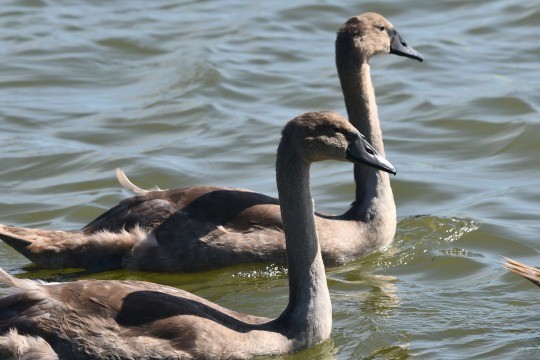


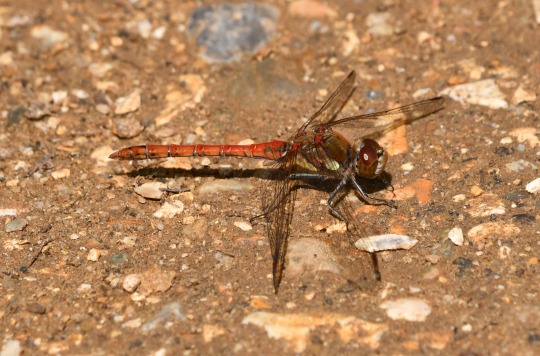
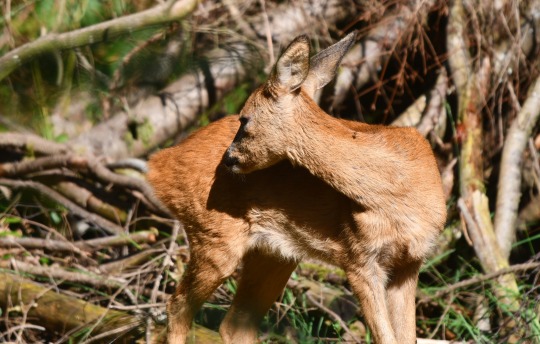
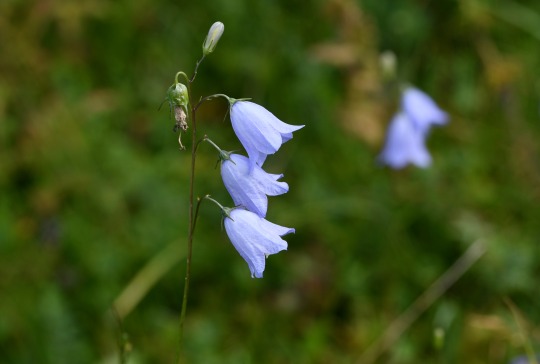

Eight of my favourite photos I took in August 2024 and month summary: Baby steps into the shift of the seasons
The photos are of; view with a moody sky at Lakeside Country Park, young Mute Swans at Keyhaven, Jersey Tiger moth at Lakeside, Chalkhill Blue at Stockbridge Down, Common Darter at Lakeside, Roe Deer at Acres Down, harebells at Shipton Bellinger and King Alfred's cake at Fishlake Meadows.
August is a time to enjoy high summer sights including butterfly filled meadows and darting dragonflies but also a time to prepare for change into an equally exciting wild season, as subtle signs like the drawing in of the nights and emergence of berries hint at the imminent baton exchange of summer and autumn. I have really enjoyed this August to the full for wildlife, walking and photos.
In the early days as the Big Butterfly Count drew to a close I ended triumphantly observing a big increase in species such as Meadow Brown, Common Blue and Speckled Wood being around. There were some stellar additions to my butterfly year this month with Essex Skipper, Silver-spotted Skipper, Chalkhill Blue and Brown Hairstreak seen. Other standout species of a fantastic butterfly month included Brown Argus, Wall Brown, Small Heath, Small White, Brimstone, Comma, Peacock and Red Admiral. I had a marvellous month of moths centring on a phenomenon over a week or so seeing a fair few Jersey Tiger moths at different locations a species I’d only ever seen three times prior to that, a really exciting influx of this resplendent moth. I was captivated by a splendid Swallow-tailed moth at home at the month’s start, with Double-striped Pug, Wavy-barred Sable, my first ever Purple Bar, Grass-veneer, Silver Y, Small Dusty Waves and Six-spot Burnet also enjoyed. As the month went on butterflies rather made way for dragonflies to take centre stage a little, with mesmerising times watching Migrant Hawker, Southern Hawker, evocative of late summer for me Common Darter and Black-tailed Skimmer, with Beautiful Demoiselle and Blue-tailed Damselfly good to see too.
Shift in the year was evident in my birdwatching month too which was another brilliant one with some migration movement. I loved seeing Whinchats at Hook-with-Warsash, Little Stint and Curlew Sandpiper at Pennington and Osprey at Fishlake Meadows. I got some splendid views of the Peregrines at Winchester Cathedral this month, very much enjoyed the new Great Crested Grebe chicks and young Moorhens on regular walks at Lakeside Country Park and was thrilled to see adorable Mute Swan cygnets well a few times at Winnall Moors and Keyhaven in a strong year I’ve had for seeing young birds. Other highlights this month included Ravens, Jay, Red Kite, Buzzard, Marsh Harrier, Kestrel, Sparrowhawk, the last Swifts, Swallow, House Martin, Sand Martin, Stock Doves, Stonechat, Bullfinches, Great Spotted Woodpecker at Lakeside and Green Woodpecker there and heard elsewhere, Chiffchaff, Long-tailed Tit, Blue Tit and Goldfinches including young at home, a few Kingfishers, Cormorants including notably at Lakeside and Winnall Moors, Grey Heron including notably at Lakeside and in Winchester, Little Egret, Great White Egret, Spoonbills, Knot, Grey Plover, Ringed Plover, Avocet, Common Sandpiper, Dunlin, Snipe, Whimbrel, Curlew, Eiders and some Tufted Ducks including ducklings.
Other nice sightings this month included of Roe and Fallow Deers on wonderful afternoon of deers at Acres Down in the New Forest, Grey Squirrel, Common Red Soldier beetle, my first ever Tawny Longhorn beetle at Shipton Bellinger, ladybirds, pondskater with especially lots at one point at Lakeside sticking in my mind, sawflies, charming Hornet mimic hoverfly at Stockbridge Down, Yellow-haired Sunfly, other hoverflies and bees, Ichneumon wasps, Fox and Cinnabar moth caterpillars, crickets/grasshoppers including Roesel’s bush cricket, Long-winged Conehead and Common Field Grasshopper, snails at home on wet nights and gorgeous Ambersnail at Winnall Moors, Common Lizards at Magdalen Hill and Grey Silverfish and spiders at home.
Onto plants and I saw some more thrilling wildflowers this month including fairy flax, water speedwell and another speedwell, St. John’s-worts, fleabane, ragwort, bird’s-foot trefoil, forget-me-not, scarlet pimpernel, water mint, sundew, bog asphodel, hemp agrimony, purple loosestrife, great willowherb, rosebay willowherb, small-flower hairy willowherb, marjoram, wild basil, tufted vetch, vetch, viper’s-bugloss, scabiouses including fine devil’s-bit scabious, wild carrot, upright hedge-parsley, sea aster, scentless mayweed, pineappleweed, dock, self-heal, sainfoin, creeping thistle, spear thistle, woolly thistle, horseweed, common mallow, musk mallow, marsh mallow, golden samphire, nightshade, broad-leaved enchanter’s nightshade and some of my favourites centaury, restharrow, common toadflax, eyebright and endearing nodding harebells. It was amazing to see sunflowers at home in the garden a stalwart of August with the fuchsias and black-eyed Susans coming on nicely too. The aforementioned berries I really enjoyed seeing this month included loads of blackberries and hawthorn, blackthorn sloes, rowan, guelder rose berries, nightshade berries, cuckoo-pint berries, elderberries, wild service tree berries and wayfaring tree berries with apple, acorn and chestnut seen too. There were some nice mushrooms seen this month as well including King Alfred’s cake and panthercap and I took in some stunning views at various locations and habitats with epic sky scenes including moody scenes, the moon and sunsets observed. Have a great September all.
#photography#walking#wildlife#birdwatching#moths#2024#outdoors#butterflies#chalkhill blue#brown hairstreak#fungi#wildflowers#flowers#sunflowers#roe deer#king alfred's cake#common darter#migrant hawker#lakeside country park#mute swan#sky#landscape#cygnets#winnall moors#fishlake meadows#jersey tiger moth#acres down#new forest#hampshire#england
9 notes
·
View notes
Text
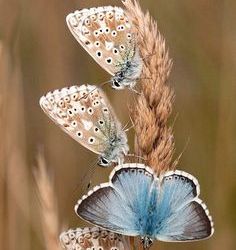
lepreskil, Roosting chalkhill blues
16 notes
·
View notes
Text
ChalkHill Blue Butterfly Cookie reference sheet + info



13 notes
·
View notes
Text
claire bug liker: butterfly edition because i found this pretty picture from here.

i bet claire’s collection has a section just like this… i’ve said it before that she didn’t collect butterflies because they make her anxious (of damaging the wings when pinning them, etc.) but. i think the few specimen she has are all blue butterflies . random headcanon: when she moves in with hunt she makes him put up one of these on a wall:

in the living room. has to be visible ofc. one of her favourites butterflies is the chalkhill blue. which is blue. look at these crazy guys:


and she has a brooch of the adonis blue, which was very clear from this drawing i made:


all of these butterflies are from the paleartic. we gotta get claire to scotland… NOW!!!!!!!!! well, the adonis butterfly is actually found more often in southern england but let me indulge in the scenario i just made up (blair and claire cousin trip to scotland and wales)(is this anything to anyone else)(can you imagine how many grey hairs claribel would give blair).
11 notes
·
View notes
Note
hi aly!! happy pride month!
i’ve seen you post about butterflies a few times and i was wondering- which species/type is your favorite?
(also i was totally inspired by your pfp frame so i did one for mine lol)
HI RAINE! :D happy pride month! your pfp looks great!!! :)
AND THANK YOU FOR ASKING ABOUT MY FAVORITE BUTTERFLY!!! i know you probably wanted a singular answer as to which one is my favorite, but i am insane af when it comes to these beautiful lil creatures so i fear i cannot choose 😭 i love them all too much! 🫶 but here is an quick summary of my top ten favorites:

here is a spicebush swallowtail, or Papilio troilus! it is commonly found in north america, it loves deciduous woods and swamps, and i’ll bet you can guess what this pretty lil butterfly’s most common host plant is! (if you guessed a spicebush, you would be correct! 🫶)

this small guy is a chalkhill blue, or a Lysandra coridon! they are found in the palearctic, they love chalky grasslands, and the female chalkhill blues are actually brown rather than blue! :)

this is a red-spotted purple, or Limenitis arthemis! they are spread all throughout north america, they like birches and willow trees, and their scientific name translates to “harbor goddess” in greek! <3

here is a mourning cloak, or the Nymphalis antiopa. this butterfly is native to eurasia and north america. it is montana’s state butterfly, it has one of the longest lifespans of any butterfly (it can live up to a year!), and it is called the camberwell beauty in england!

this is a polyura jupiter! it is found in indonesia and other islands that surround it! the larvae supposedly feed on albizia stipulata! :D
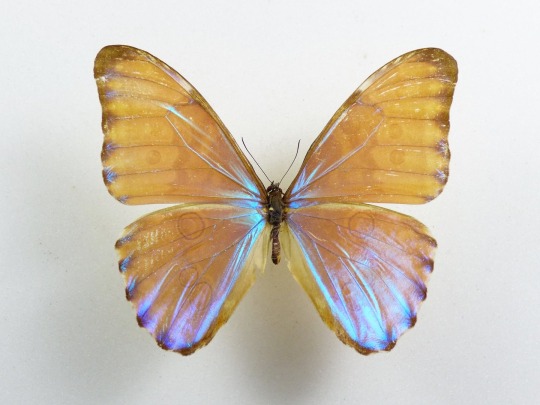
this is a Morpho aurora! it is neotropical, it is found often in the rainforests of peru and bolivia, and it is named after the roman goddess of dawn, aurora!

this is the blue mormon, or Papilio polymnestor. it is found in south india and sri lanka, it is the fourth largest butterfly in india, and it loves areas with heavy rainfall! :D

this is the eastern tiger swallowtail, or Papilio glaucus! it is native to eastern north america, the first known drawing of a north american butterfly was a drawing of this butterfly in 1587, and it gets its name from its distinctive black “tiger” stripes! :)

this is a malachite, or a Siproeta stelenes. it is a neotropical butterfly found all throughout central and northern south america, it is one of the most commonly found butterflies in south america, and it is named after the mineral malachite because of its similar bright green coloring.

and last but not least, here is a marbled white, or Melanargia galathea. this species can be found in forests clearings and meadows across most of iran, southern russia, asia minor, and europe, they are most often seen out and about during june through september, and the butterfly larva love eating grass! :)
ANYWAYS EXCUSE MY MUCH TOO LONG BUTTERFLY RANT! THANK YOU SM FOR THE ASK RAINE 😭 <3
(also, i looked for a raine butterfly cause it sounded like it could possibly exist, but there sadly isn’t one :( don’t feel too bad tho, there are some cute little mites and beetles called rain bugs and rain beetles respectively, which is semi-close to your name! :) oh and the mites are a beautiful bright red! they’re pretty cute! :])
#sorry this took so long to answer 😭🫶#i may have went a little bit overboard with the butterfly species lmao 😭#aly answers#aly’s lovely moots!#butterfly
9 notes
·
View notes
Photo
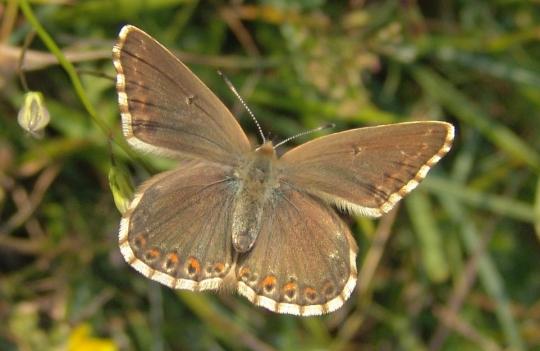


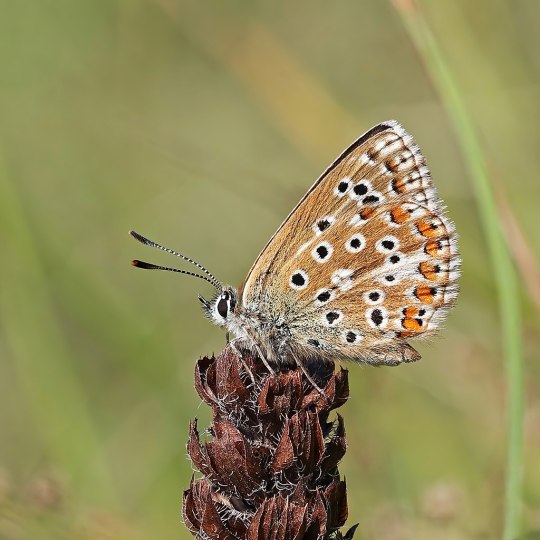
Chalkhill Blue (Lysandra coridon)
1. Female, Cradley, Malvern, U.K - Gailhampshire
2. Male, Cradley, Malvern, U.K - Gailhampshire
3. Male, Lehrensteinsfeld, Germany - Rosenzweig
4. Female, Yoesden Bank, Buckinghamshire - Charles J. Sharp
23 notes
·
View notes
Text

Chalkhill Blue, Polyommatus coridon, Lysander coridon Canon 400D EF 100 2.8 f/5 1/400 iso: 200 Celakovice-Jirina, Czech Republic 7/8/2011
#Lycaenidae#SaveButterflies#butterflies#Lepidoptera#insects Invertebrates#Macro#invertebrates#insects#insectphotography#macrophotography#insect#canon#grasslands
6 notes
·
View notes
Text
Section 5 of the London Loop
The London Outer Orbital Path, or LOOP, almost completely encircles Greater London. Nearly 150 miles are split into 24 mostly flat or gently sloping sections sections between Erith station (1) and Purfleet (24). The Loop combines beautiful open spaces like Hainault Forest Country Park and Bushy Park with historic buildings such as Hall Place and Black Jack's Lock & Mill.

The 10.2km/6.4mile Section 5 is considered one of the most picturesque walks. Notable features you pass through include:
Riddlesdown chalk grassland, ancient woodland and forested paths with the chance to spot wildflowers, birds including nesting skylarks and butterflies (rare chalkhill blue butterfly). The quarry at the foot of Riddledown is approx 200 years old and was working until 1967. The impressive railway viaduct dates from 1884 when the line from East Grinstead to Oxted opened.


Kenley Common came into the City of London's care in 1874. The Royal Flying Corps was based at Kenley Airfield during WW1 and was an RAF base for Spitfires and Hurricanes in WW2.
The stunningly beautiful Happy Valley and Farthing Downs (SSSI) are home to one of Britain's rarest plants - the yellow rattle, so called because when the plant is ready to seed it dries out and rattles. Traces of human occupation dating back to the neolithic periods 12,000 years ago can still be found. Later occupants, Anglo-Saxon communities, used the Downs as a burial ground, creating large burial mounds, known as barrows, for their most important members. From Farthing Downs links to 21st Century London are also visible with views over to the Canary Wharf and the Shard on the horizon.
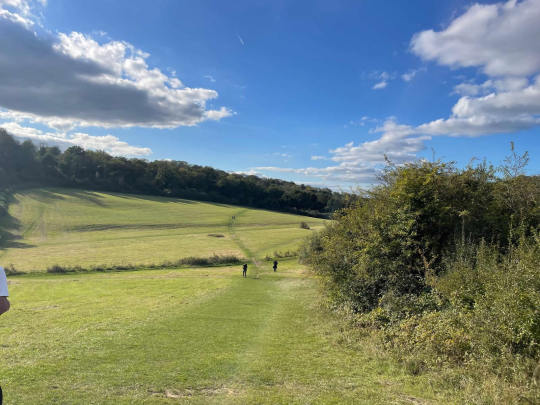
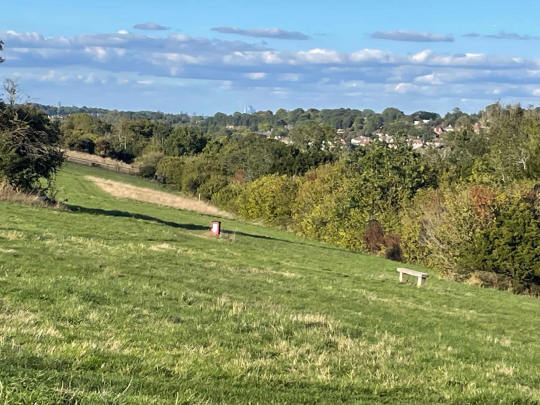
0 notes
Text

Chalkhill blue, St Catherine’s Hill, Winchester, Hampshire, Aug 2024.
0 notes
Note
Ooh you're absolutely a Chalkhill Blue! :D


TDP rambles AND a Carmen Sandiego pfp? :0 we're the same kind of nerd, I love that
would you like to see the adoraburr I made
OH MY GOSH A FELLOW TDP AND CARMEN STAN 😃!!! HI!!! I LOVE THIS TOO 💞💞💞!!!
YES HELLO OH MY GOSH I WOULD BE HONORED 😭
20 notes
·
View notes
Text

Chalkhill blue
#nature#photography#plants#blue#insect#bugs#butterfly#blue butterfly#baby blue#pale blue#fuzzy#chalkhill blue#wildlife#fuzzy butterfly
72 notes
·
View notes
Text



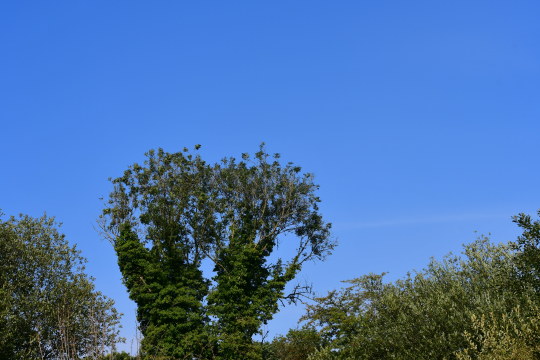


03/08/2024-Radiant shades of blue and purple: One of my first Chalkhill Blues and harebells of the year at Stockbridge Down and views at Stockbridge Common Marsh as well as Cinnabar moth caterpillar at Stockbridge Down and Tufted Ducks probably young at Stockbridge Common Marsh.
Other highlights across the two locations were an excellent Essex Skipper also my first of the year taking my year list to a pleasing 40 to make it my fifth highest ever butterfly year list, Small Skipper, some of the most Meadow Browns I've ever seen with eighty counted in a Big Butterfly Count at Stockbridge Down, Gatekeeper, Large White, Common Blue, Wavy-barred Sable, Silver Y, Six-spot Burnet, a bird of prey quadruple in Buzzards, Kestrels, Red Kite and Sparrowhawk, Goldfinch, Swallow, House Martin, Seven-spotted Ladybird, dashing Hornet Mimic hoverfly, wild basil, marjoram, common toadflax, centaury, bird's-foot trefoil, knapweed, herb-Robert, meadowsweet, eyebright, dark mullein, soapwort, rosebay willowherb, purple loosestrife, St. John's-wort, ragwort, bramble flower and blackberries and blackthorn sloes.
#photography#swallow#chalkhill blue#essex skipper#2024#walking#summer#stockbridge down#meadow brown#sparrowhawk#red kite#common blue#stockbridge common marsh#st. john's-wort#birdwatching#flowers#big butterfly count#seven-spotted ladybird#colourful#august#buzzard#kestrel#outdoors#earth#europe
8 notes
·
View notes
Text
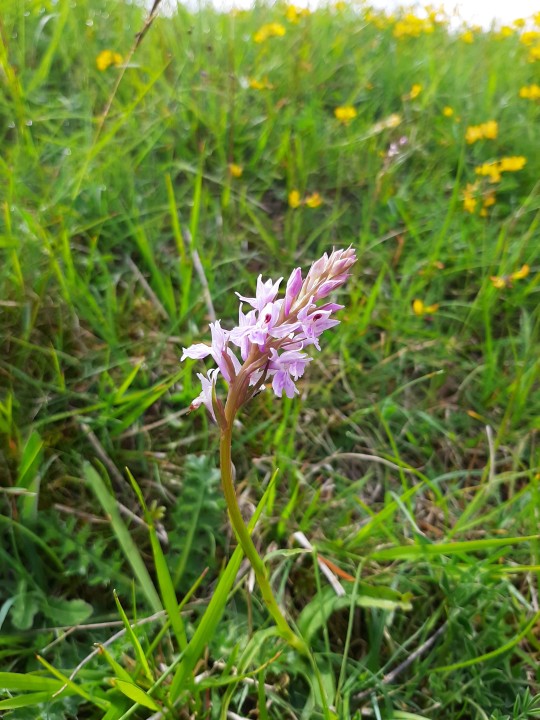
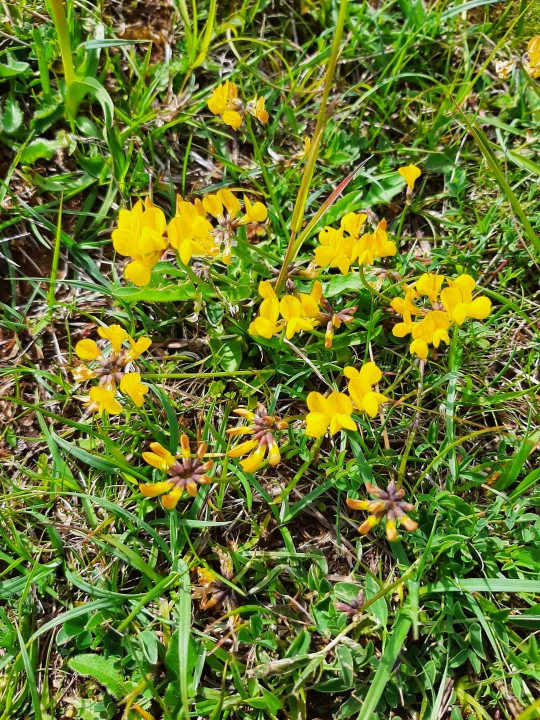


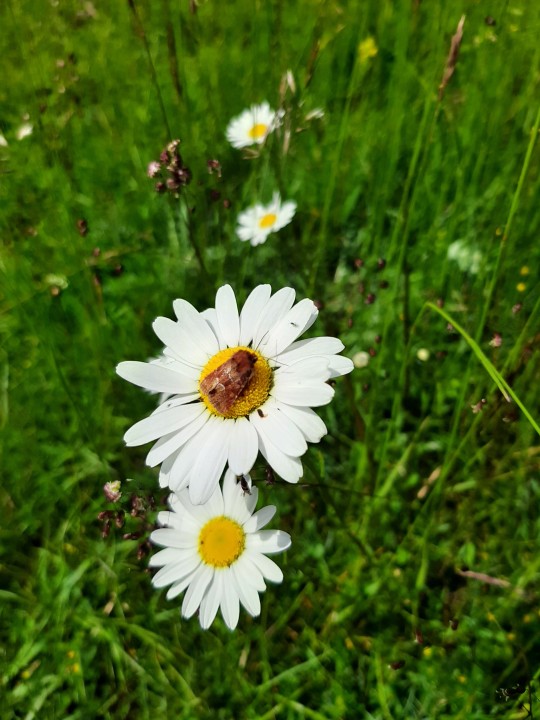
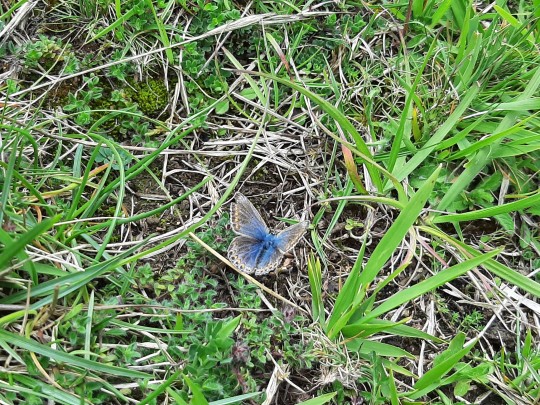
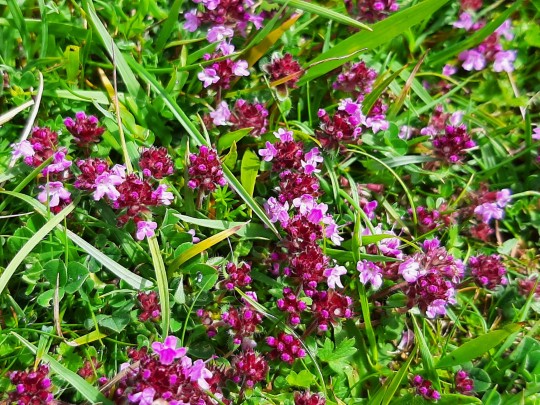
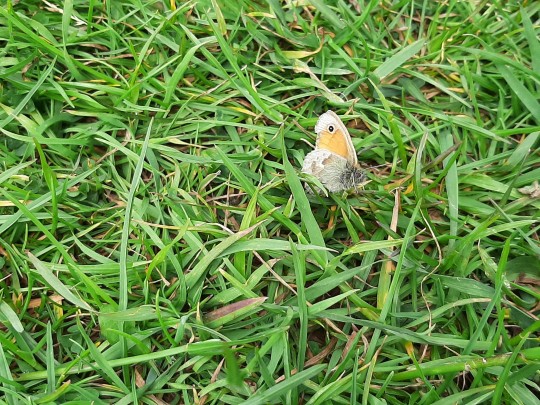

Went for a walk on the common with Bumble and look at all the lovely flowers that are out and the bugs that are attracted to them, we are so lucky that the blue butterflies are coming back 💙
#witchblr#witchy#flowers#orchids#birds foot trefoil#fragrant orchid#common spotted orchid#yellow wort#mother of thyme#field scabious#bluecaps#chalkhill blue butterfly#ox eye daisy#Hepialidae#common swift moth#gatekeeper butterfly
12 notes
·
View notes
Note
20 and 25 for Claire
hi!!! thank you for asking <33
20) What hobbies does your OC have?
claire likes insects very much and she used to collect them in high school and throughout her years majoring in biology! her collection was very varied but she was very fond of beetles (and she was biased towards ladybugs, because they were cute, but she also really like the ironclad beetles) and moths. she really liked butterflies too (she loves the chalkhill blue), but they’re very fragile and she��d be worried she damage them so there weren’t many of them in her collection. she stopped collecting around the time she got accepted into hollywood u and moved to los angeles. and she would never tell you this, but she did grow very self-conscious about her interest in insects after moving to an environment without many… bug enthusiasts.
claire also really likes rollerblading. she used to rollerblade all the time in high school, and she still does it on weekends. she enjoys reading quite a lot, too. and claire lovesss baking! she doesn’t like cooking very much, but she likes finding and trying new desserts and sweets recipes, and she always spends a lot of time decorating cookies whenever she makes them.
25) The name you chose for your OC, why did you chose it?
claire has a 50s/old hollywood theme going on, so i wanted to give her a name that reflected it. i wanted a name that fit right into a film’s opening credits scene. i also wanted her to have a shakespearean name, but i didn’t want any of the more well known/more recognisable ones. i arrived on a minor character from the tempest, only mentioned by name: claribel. i liked it! actress claire bloom (seen in richard III, 1955) is responsible for the nickname. etymologically, claire means “famous”. i borrowed the surname from actress gloria swanson. she stars in sunset boulevard, claire’s favourite film :)
also, i wanted it to match my hss prime mc’s name, blair. the names are very similar, which is funny to me. plus, both names are traditionally masculine (in scottish gaelic for blair and in french for claire).
#oc: claire swanson#ask box#there are many poems written about ‘claribel’ too. fits her muse theme too
3 notes
·
View notes
Photo
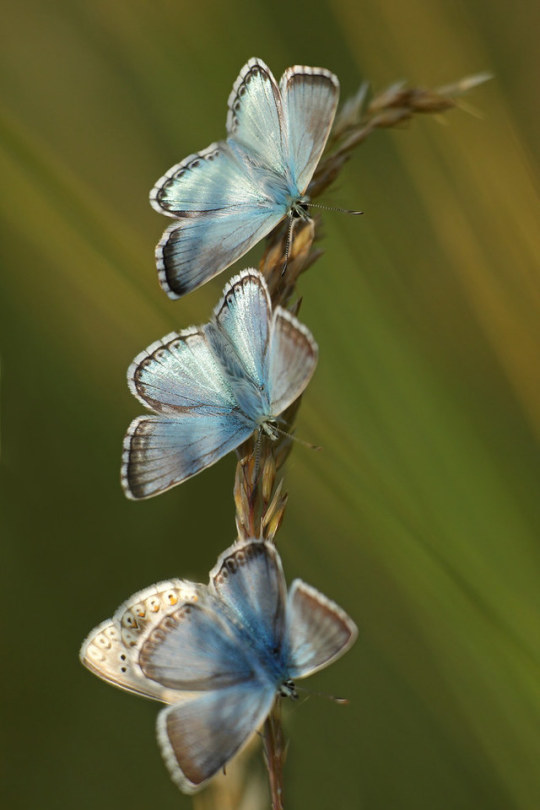
Chalkhill Blue Butterflies by Alan MacKenzie on Flickr
49 notes
·
View notes
Text
Anyways..... The main 4 as bugs bc I say so:
Gon as a ladybug 😛


Killua as a chalkhill blue butterfly 🙏

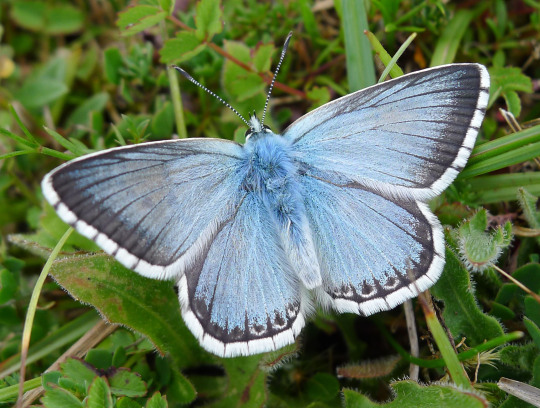
Kurapika as a cecropia moth 😳


Leorio as a dragonfly 🤗

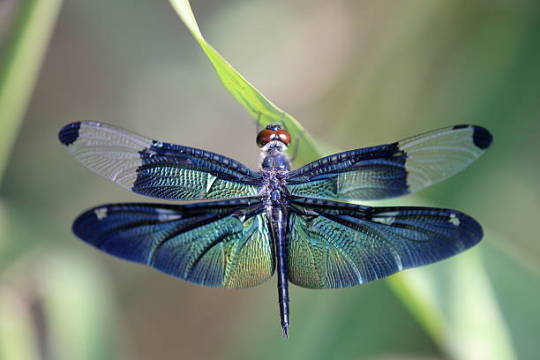
285 notes
·
View notes